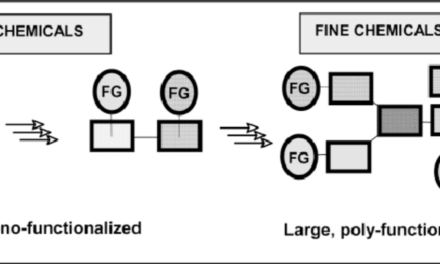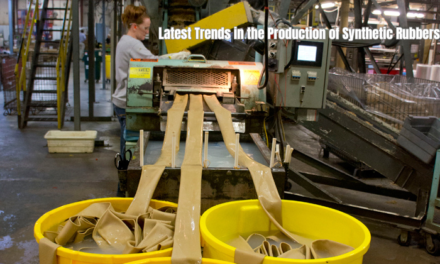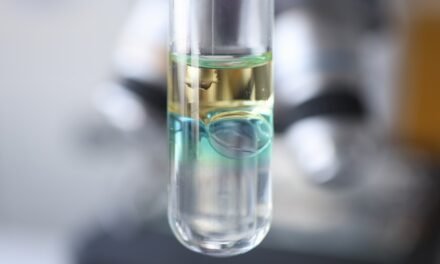The fine chemicals market is evolving rapidly, driven by advancements in technology, shifting consumer demands, regulatory changes, and the growing need for sustainable solutions. These trends are shaping how fine chemicals are developed, produced, and applied across industries. Below are the key trends currently influencing the fine chemicals market:
1. Growth of Biopharmaceuticals and Biotechnology
- Trend:
- Increasing demand for fine chemicals in the production of biologics, such as monoclonal antibodies, peptides, and mRNA vaccines.
- Drivers:
- Expansion of personalized medicine and targeted therapies.
- The success of mRNA-based COVID-19 vaccines driving interest in lipid nanoparticles and nucleic acid-based fine chemicals.
- Example:
- Use of Fmoc-protected amino acids in peptide synthesis for therapeutic applications.
2. Demand for High-Purity Specialty Chemicals
- Trend:
- Industries like pharmaceuticals, electronics, and agrochemicals are increasingly requiring ultra-high-purity fine chemicals.
- Drivers:
- Stringent regulatory requirements and the need for precision in applications like semiconductors and advanced materials.
- Example:
- High-purity fluorinated compounds for semiconductor manufacturing.
3. Adoption of Green Chemistry and Sustainability
- Trend:
- Rising focus on environmentally friendly processes and bio-based fine chemicals.
- Drivers:
- Regulatory pressure to reduce carbon emissions and waste.
- Consumer demand for sustainable and ethical practices.
- Example:
- Enzymatic synthesis of APIs like sitagliptin (diabetes medication) to reduce environmental impact.
4. Increasing Use of Biocatalysis
- Trend:
- Growing use of enzymes and microorganisms as catalysts for producing fine chemicals.
- Drivers:
- High specificity, reduced waste, and eco-friendly production processes.
- Example:
- Use of biocatalysis in the production of chiral intermediates for pharmaceuticals.
5. Rise of Continuous Manufacturing
- Trend:
- Shift from batch processes to continuous flow chemistry for fine chemicals production.
- Drivers:
- Improved efficiency, scalability, and safety.
- Reduction in downtime and operational costs.
- Example:
- Continuous flow synthesis of APIs and agrochemical intermediates.
6. Custom Synthesis and Contract Manufacturing
- Trend:
- Outsourcing of fine chemical production to specialized contract manufacturing organizations (CMOs) and custom synthesis providers.
- Drivers:
- Need for flexibility, cost savings, and access to specialized expertise.
- Example:
- Pharmaceutical companies outsourcing the production of intermediates to focus on R&D.
7. Expansion of the Electronics Industry
- Trend:
- High demand for fine chemicals in semiconductor manufacturing and advanced materials.
- Drivers:
- Growth of 5G technology, electric vehicles, and smart devices.
- Example:
- Use of photoresists and fluorinated fine chemicals in lithography processes.
8. Integration of Digital Technologies
- Trend:
- Increasing use of artificial intelligence (AI), machine learning (ML), and automation in fine chemical R&D and manufacturing.
- Drivers:
- Need for process optimization and predictive analytics to enhance efficiency.
- Example:
- AI-driven design of synthetic routes for APIs.
9. Expansion of the Agrochemical Sector
- Trend:
- Growing demand for fine chemicals in crop protection products and sustainable fertilizers.
- Drivers:
- Global focus on food security and sustainable agriculture.
- Example:
- Development of bio-based herbicides and pesticides using fine chemicals.
10. Increasing Focus on Rare and Specialty Chemicals
- Trend:
- Rising interest in niche fine chemicals with unique properties for advanced applications.
- Drivers:
- Need for customized solutions in fields like aerospace, energy storage, and nanotechnology.
- Example:
- Production of rare earth-based fine chemicals for advanced batteries.
11. Regulatory Pressures and Compliance
- Trend:
- Strengthened regulations on safety, purity, and environmental impact driving innovation in the fine chemicals industry.
- Drivers:
- Compliance with Good Manufacturing Practices (GMP) and REACH standards.
- Example:
- Development of low-toxicity synthesis routes to meet regulatory requirements.
12. Growth in Emerging Markets
- Trend:
- Increasing production and consumption of fine chemicals in emerging economies.
- Drivers:
- Industrialization and rising demand for pharmaceuticals and agrochemicals in Asia-Pacific, Latin America, and Africa.
- Example:
- Expansion of fine chemical manufacturing facilities in India and China.
13. Increasing Collaboration and Partnerships
- Trend:
- Collaborative efforts between chemical manufacturers, research institutions, and end-user industries.
- Drivers:
- Accelerating innovation and reducing time-to-market.
- Example:
- Partnerships between pharmaceutical companies and fine chemical manufacturers for API development.
14. Investment in Advanced Analytical Techniques
- Trend:
- Adoption of sophisticated analytical tools for quality control and process optimization.
- Drivers:
- Demand for high-purity chemicals and precise characterization.
- Example:
- Use of NMR spectroscopy, HPLC, and mass spectrometry for nuanced chemical analysis.
15. Resilience in Supply Chains
- Trend:
- Diversification and strengthening of supply chains to mitigate disruptions.
- Drivers:
- Lessons learned from the COVID-19 pandemic and geopolitical tensions.
- Example:
- Regional manufacturing hubs for critical fine chemical precursors.
Conclusion
The fine chemicals market is undergoing significant transformation, driven by innovation, sustainability goals, and advancements in technology. Trends such as the growth of biopharmaceuticals, adoption of green chemistry, and integration of digital technologies are reshaping the landscape. As industries like pharmaceuticals, electronics, and agriculture continue to evolve, the demand for high-quality, customized fine chemicals will remain strong, pushing manufacturers to innovate and adapt.
Hashtags
#FineChemicalsMarket #FineChemicalsTrends #SpecialtyChemicalsMarket #HighValueChemicals #ChemicalIndustryTrends #MarketGrowth #IncreasedDemandForFineChemicals #FineChemicalsDemand #PharmaceuticalChemicalsGrowth #SustainableChemicalsMarket #GreenChemicals #SustainableChemicals #EcoFriendlyFineChemicals #GreenChemistry #CircularEconomyInChemicals #InnovationInFineChemicals #ChemicalInnovation #AdvancedMaterials #TechInChemicals #NextGenChemicals #PharmaceuticalChemicals #FineChemicalsInPharma #AgroChemicals

















